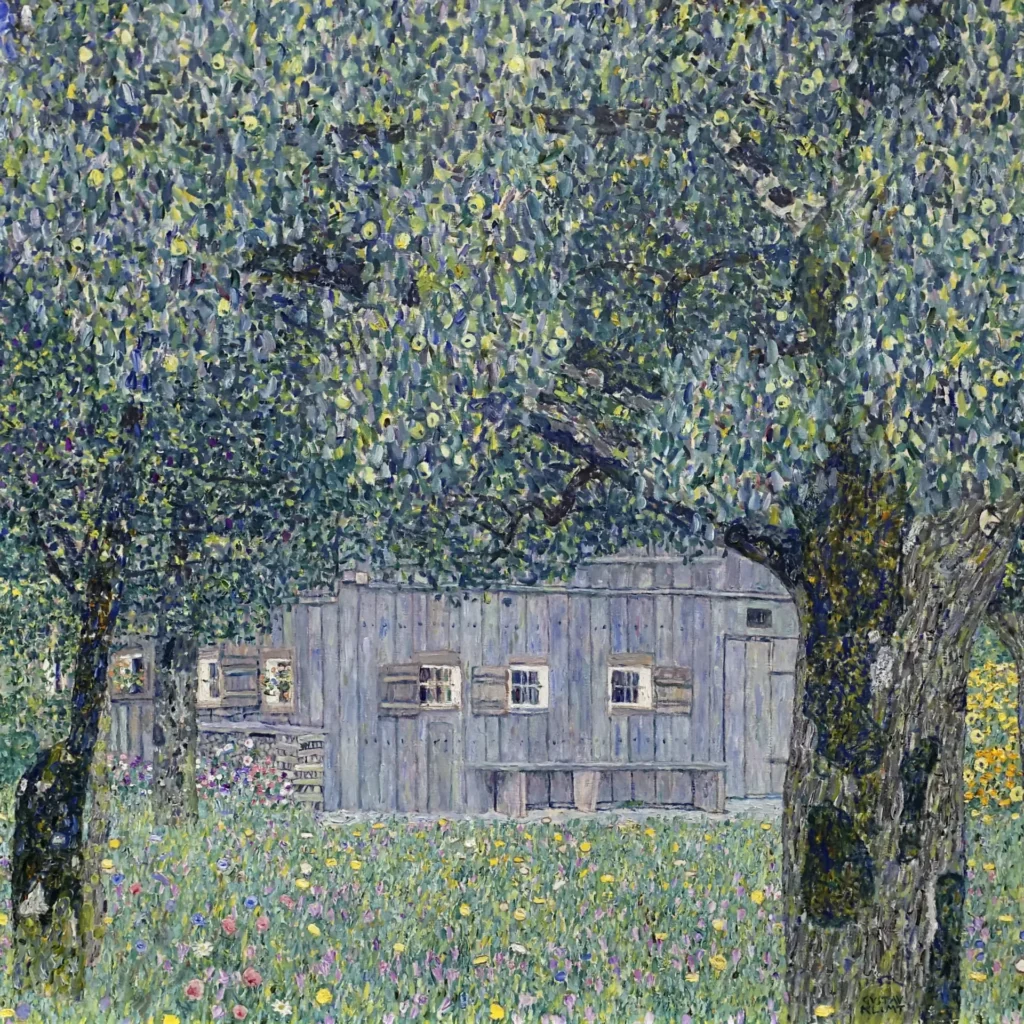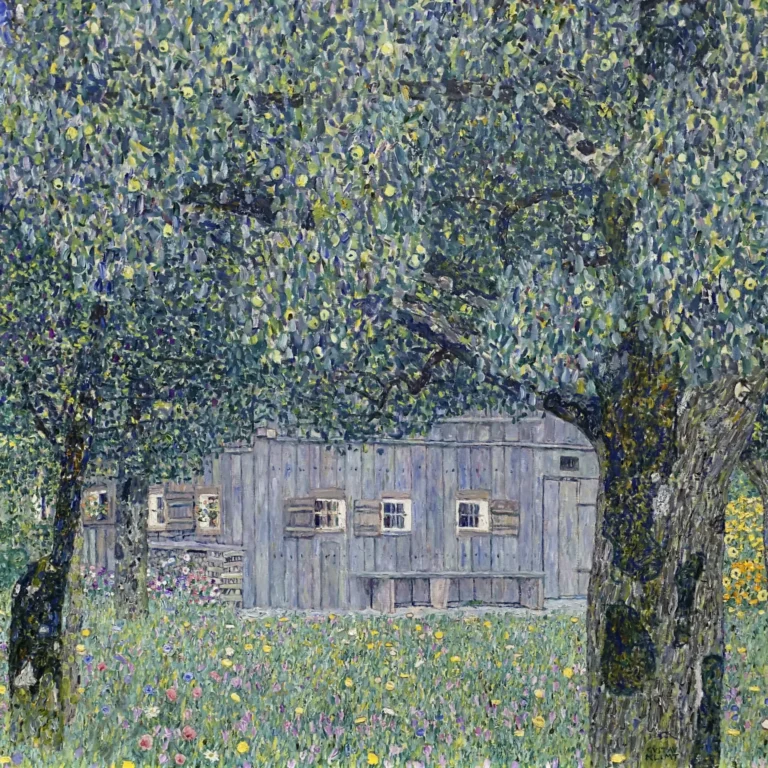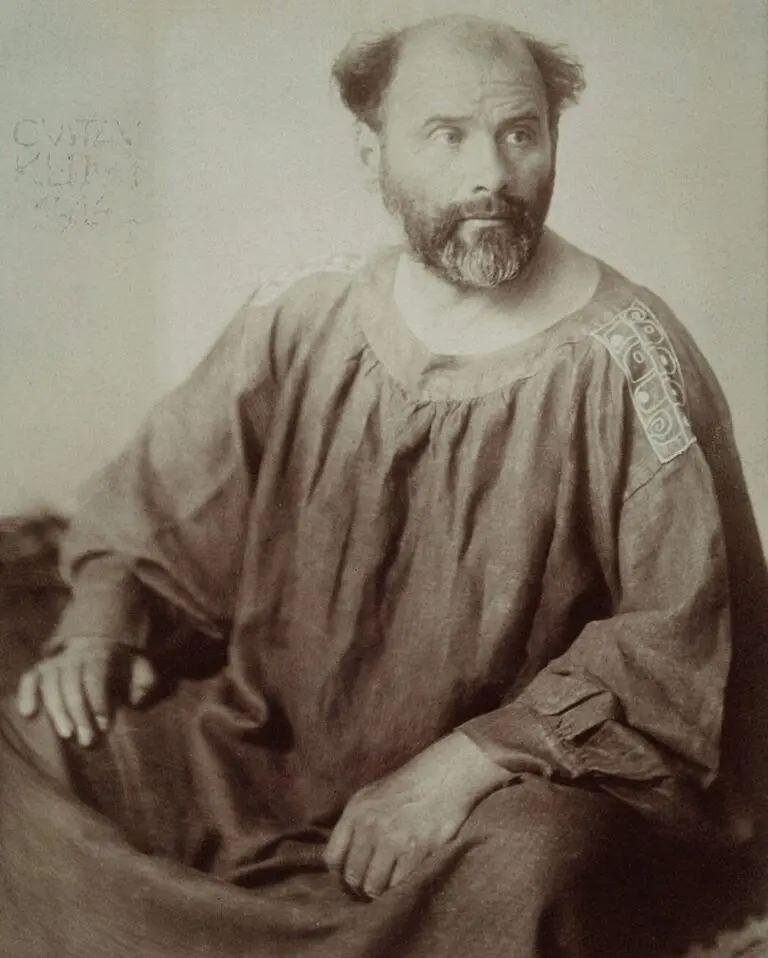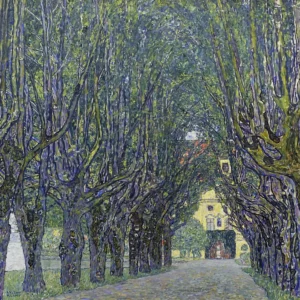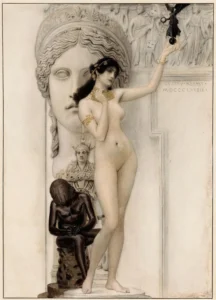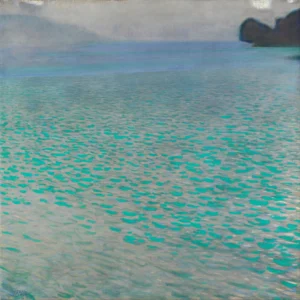Farmhouse in Upper Austria (1911-1912)
Farmhouse in Upper Austria is an exquisite oil painting by Gustav Klimt, showcasing a charming wooden farmhouse nestled in a picturesque landscape of Buchberg, Upper Austria. Painted between 1911 and 1912, this piece exhibits Klimt's transition into portraying serene rural scenes, characterized by his pointillist technique and careful attention to detail. The artwork emanates tranquility through its careful use of gray tones, emphasizing the farmhouse amidst a flower meadow and fruit trees, showcasing Klimt's ability to infuse landscapes with his unique artistic flair.
1911 - 1912
About the Artwork
Created during a pivotal moment in Klimt's career, Farmhouse in Upper Austria reflects a deep appreciation for the agricultural beauty of his homeland. The painting serves as a homage to the simplicity found in rural life, capturing the harmonious coexistence of nature and human habitation. Klimt, known for his ornate and sensual figures in earlier works, turned his gaze to the natural world, inspired by his surroundings in Buchberg. This shift marked a significant evolution in his artistic journey, where he began exploring themes of nostalgia and the pastoral, embracing a more tranquil and introspective style in his later works. The delicate points of color and the soft focus reflect Klimt's keen observation and deep emotional connection to the landscapes of Austria, marking a period of profound serenity in his artistic output.
Did You Know
Farmhouse in Upper Austria marks a significant shift in Gustav Klimt’s work as he transitioned from ornate and sensual figures to the tranquil beauty of rural landscapes, reflecting a deeper appreciation for nature in his later career.
Klimt was inspired by the serene environment of Buchberg and often painted from a deeply personal perspective, bringing forth elements of nostalgia and simplicity in his depictions of rural life.
Currently, Farmhouse in Upper Austria is displayed at the California Palace of the Legion of Honor in San Francisco, a prestigious location that houses numerous works by Klimt and other notable artists of the late 19th and early 20th centuries.




